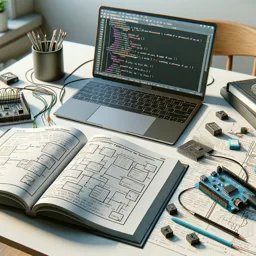What is Tkinter?
Tkinter is the standard Graphical User Interface (GUI) toolkit that comes bundled with Python. It allows developers to create windows, dialogs, buttons, menus, and other interface elements in an intuitive way. If you want to build desktop applications using Python, Tkinter is a great place to start due to its simplicity and accessibility.
Understanding Tkinter Widgets
Widgets are the fundamental building blocks of any Tkinter application. Each widget is a Python object that represents an interface element, such as labels, buttons, text boxes, and frames. These widgets can be customized with properties like color, size, and fonts to fit the requirements of your application.
Core Widgets You Should Know
- Label: Used to display text or images.
- Button: Triggers a function when clicked.
- Entry: Allows the user to input a single line of text.
- Text: Used for multi-line text input.
- Frame: Acts as a container for organizing other widgets.
- Checkbutton: For on/off selections.
- Radiobutton: For selecting one option from many.
- Listbox: Displays a list of items for selection.
- Canvas: A blank area for drawing shapes or images.
Layout Management: Arranging Your Widgets
Tkinter offers three primary geometry managers to arrange widgets in the window:
- pack: Organizes widgets in blocks before placing them in the parent widget.
- grid: Places widgets in a 2D grid.
- place: Places widgets at an absolute position you specify.
Handling Events: Making Your App Interactive
Interactivity in Tkinter arises from event-driven programming. You attach functions to widget events (like clicks or key presses). For example, you can link a button to run a specific function when it is pressed, allowing your application to respond to user actions.
Getting Started: A Simple Tkinter Example
import tkinter as tk
def on_click():
label.config(text="Hello, Tkinter!")
root = tk.Tk()
root.title("My First Tkinter App")
label = tk.Label(root, text="Welcome!")
label.pack(pady=10)
button = tk.Button(root, text="Click Me", command=on_click)
button.pack(pady=10)
root.mainloop()This code creates a simple window with a label and a button. Clicking the button updates the label text. You are encouraged to experiment with different widgets and layouts to better understand how Tkinter works.
Conclusion
Tkinter provides a great introduction to building desktop applications with Python. By understanding key widgets and basic layout management, you can develop a wide array of user-friendly applications. Continue exploring Tkinter’s extensive widget set to further enhance your UI design skills!

































